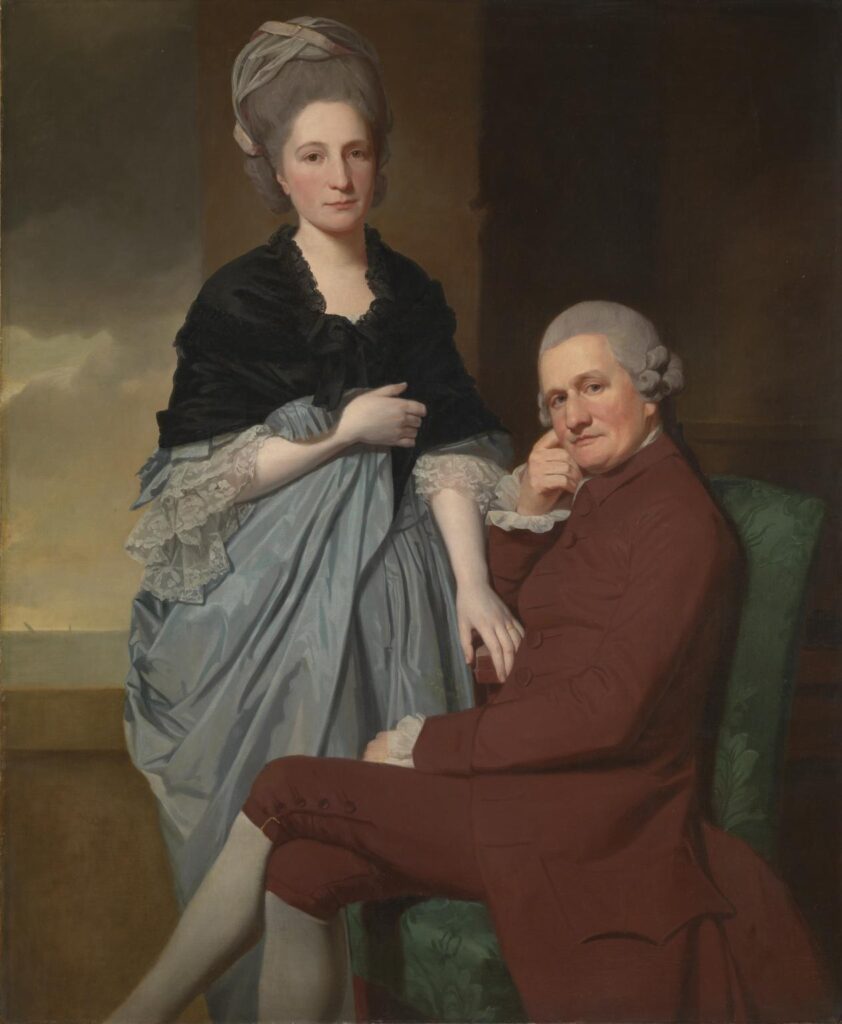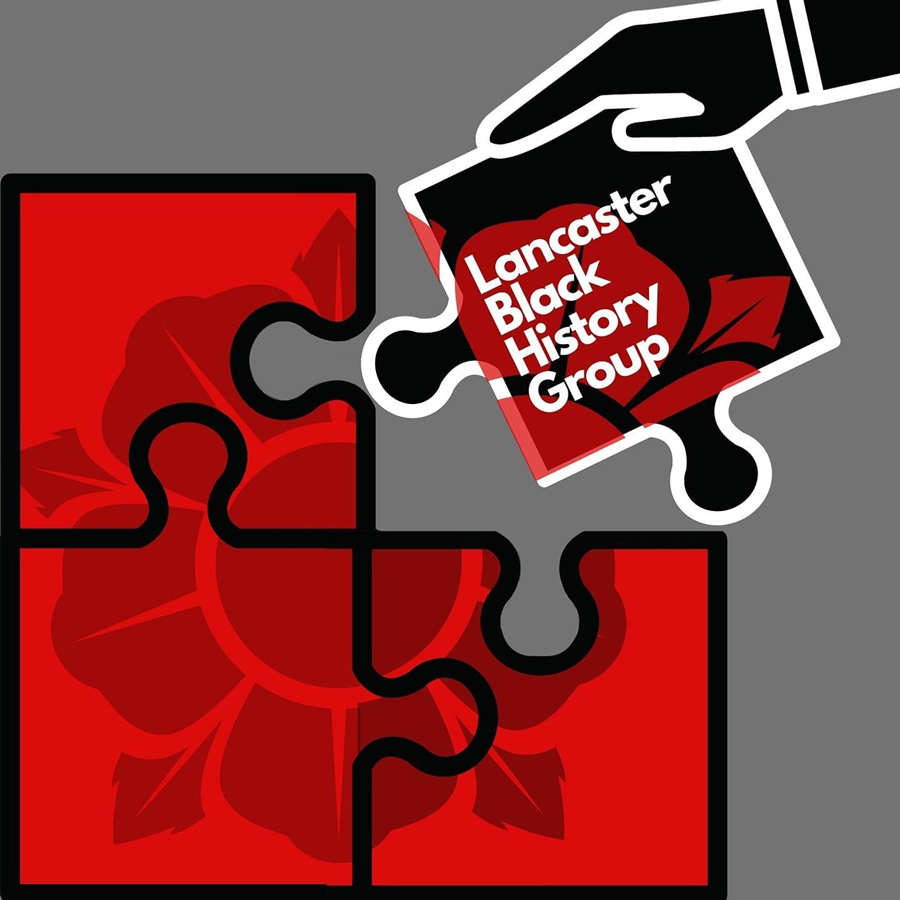Dear Tate Gallery,
In 2020, Lancaster Black History Group began a Lancaster Slavery Family Trees community research project. As students at Lancaster Girls’ Grammar School, we became involved with the project, undertaking research on the 18th century Lindow family and their links to the Transatlantic slave trade and wider slavery and plantation economies in Lancaster, and the West Indies.

Mr and Mrs William Lindow 1772 George Romney 1734-1802 Purchased 1893
We have been researching various aspects of William Lindow’s life (1726-1786), for example his grand house, No.1 Queen Square (1772), designed and furnished by Gillows, which still stands next to our school. We are writing to you about George Romney’s portrait which is in the Tate collection. Having looked at texts by historians Susan Stuart, Melinda Elder and undercovering new research evidence from sources such as the Slave Voyages database, we would like to propose some changes to your display caption for this painting, primarily regarding William Lindow’s direct participation in the slave trade, and his ownership of enslaved people in the West Indies.
We have found out that William Lindow was involved in the Trans-Atlantic slave trade, from Africa across to plantations in the West Indies, and the Intra-American slave trade between different islands. As the historian Melinda Elder details (1992), Lindow had begun his career as a mariner and ship captain, before becoming a factor in the 1750s in St. Kitts. Lindow was also the owner of two intra-American slave ships, the ‘Hobby Horse’, and ‘Two Friends’, who traded enslaved people between the islands of Grenada, St Vincent and Dominica in 1766 and he traded in enslave people in the West Indies. For example, in 1766, Lindow was resident in Grenada when his ship ‘Hobby Horse’ cleared Grenada for Dominica with seventy-eight enslaved people on board.
Lindow also co-owned two much larger Trans-Atlantic slave ships, the ‘Portland’ (registered in Liverpool) and the ‘Sarah’ (registered in Lancaster) which carried enslaved people from the Sierra Leone Estuary and the Windward coast in West Africa, across middle-passage in the 1770s.
William Lindow’s involvement with slavery, did not stop with the kidnap, purchase and selling of enslaved people. He was also a slave owner, and purchased plantations on Kearton’s Estate in St Vincent in 1756, as well as Fountains Estate which was co-owned with René Augier on the same island. In the early 1780s, Lindow purchased a third estate in Grenada. To give an example from our research, on the 10th of June 1777, Lindow and Augier bought fourteen enslaved people for £640, which we have estimated would be about £55,000 today. We even know the names of these enslaved people –although these would have been names likely given them by their owners not freely chosen- Kingsale, Mercure, Haffey, Ranger, Prince, Reynolds, Pickering, Archer, Kitty, Cole, Louise, Nancy, Charlotte and Dick (son of Charlotte).
In December 1771, William Lindow married Abigail Rawlinson (1740-1791), the daughter of his former employer and now business partner, Abraham Rawlinson, and it is likely the portrait ‘Mr and Mrs William Lindow’ (1772) was commissioned to mark this marriage and was intended for new grand house in Queen Square. ‘Melinda Elder describes how important this connection was, ‘Lindow’s career owed its success to his involvement in the West Indies trade as promoted by his connections with the Rawlinson family’ (1992:118). In terms of Lindow’s connection to the Rawlinson family, we also know that Lindow was already working as a factor for the Rawlinsons in the late 1750s. In 1752/53, he captained the merchant ship ‘Rawlinson’, which was not a slave ship, but which transported slave produced planation goods, such as sugar, between North West England and the West Indies. Lindow had obviously somewhat impressed his employer, Abraham Rawlinson (1709-1780), allowing his marriage to Rawlinson’s daughter Abigail in late 1771. Rawlinson and Lindow formed a partnership soon after the marriage and began trading together under the name ‘Messrs. A Rawlinson and Lindow’ from around 1773.
In 1772, Lindow commissioned the building of No.1 Queen Square, designed by Gillows, who also made the original frame for ‘Mr and Mrs Lindow’ (1772). Number 1 Queen Square or its coach house and stables, was also very likely the home of a black slave-servant John Chance, who was described in Lancaster’s St Mary Parish registers as a ‘black man, aged 22 years and upwards in the service of Mr Lindow’ (12th September 1777).
According to his 1786 will, Lindow owned property in Dominica, Grenada, Saint Vincent and Tortolo, with shares in a number of plantations, including ownership of enslaved people. The UCL Legacies of British Slavery database reveals that on abolition of slave ownership, Henry Lindow Lindow, who was the Lindow’s main beneficiary after the death of his wife Abigail, received British government compensation amounting to what would be approximately £250,000 today, for more than 100 enslaved people on St Vincent plantations.
In summary, your current display caption describes Lindow as ‘a prosperous merchant at Lancaster’, but we feel it needs to clearly indicate that he was in fact a merchant, slave trader, planter and slave owner. It is important to acknowledge that Lindow’s wealth, the wealth that enabled him to commission Romney to paint this and other portraits in 1772, was acquired through profits gained in part through the trade in and ownership of enslaved people (we know Romney painted 3 portraits for Lindow in 1772 at a cost of £63, or around £5,000 today).
A more appropriate caption could read something like this:
William Lindow (1726-86) was a prosperous ship captain, merchant, slave trader, planter and slave owner, based in Lancaster during a period when the town was the fourth largest slave trading port in England. This career is hinted at by the seascape and ships glimpsed in the background of the painting. This double portrait was commissioned in 1772 and is described in Romney’s account book as an informal ‘conversation’ piece’. It celebrates Lindow’s 1771 marriage to Abigail Rawlinson (1740-1791), the daughter of his business partner Abraham (1709-1780), whose portrait Lindow also commissioned at the same time (see ‘Abraham Rawlinson’ 1772). The painting was intended for the Lindow’s lavish new house No.1 Queen Square, Lancaster. A baptismal record from 1777 suggests a black slave-servant named John Chance, who was one of Lancaster’s early black residents, was a servant at this house.
We hope you will be able make this or a similar change to the display caption
We would be delighted to discuss further.
Yours Sincerely,
Jasmine Patel, Emily Yates and Emma Chandler, with Professor Imogen Tyler (Lancaster University) and Mr Harry Yearnshire (Head of History at LGGS), and Dr Sunita Abraham on behalf of Lancaster Girls’ Grammar School and the Lancaster Black History Group.
References and Sources
Melinda Elder, (1992) Slave Trade and the Economic Development of 18th-Century Lancaster, Edinburgh: Edinburgh University Press
Melinda Elder (2020) ‘A Georgian Merchant’s House in Lancaster: John Rawlinson, a West-Indies Trader and Gillow Client’. Contrebis 38.
Celeste-Marie Bernier, Alan Rice ,Lubaina Himid and Hannah Durkin (2019) Inside the invisible: Memorialising Slavery and Freedom in the Life and Works of Lubaina Himid, Liverpool: Liverpool University Press.
Susan Stuart (1999) ‘Number One Queen Square: Building and Furnishing William Lindow’’s House 1772–1773’, Centre for North- West Regional Studies Bulletin, no.13: pp.46–59.
UCL Legacies of British Slavery database
International Slave Voyages Database
How to cite
Jasmine Patel, Emily Yates, Emma Chandler, Imogen Tyler, Harry and Sunita Abraham (2021) Letter to the Tate, Lancaster Slavery Family Trees (Blog), available at https://lancasterblackhistorygroup.com/2022/11/28/letter-to-the-tate/

Leave a comment